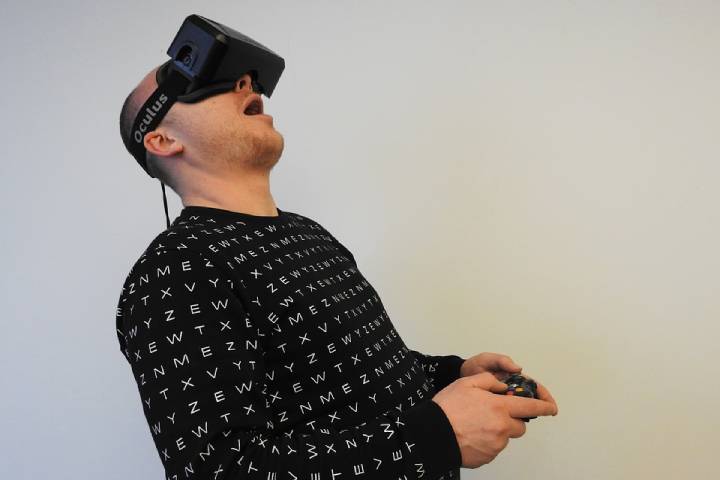One of the most attractive fields for any lover of technological progress is augmented reality and virtual reality. Too many people think careers in AR and VR are just a pipe dream – indeed, they are too niche to get into? Well, AR and VR are growing; it’s proved not to be just a fad and is slowly but surely becoming a culturally relevant and significant field of technology.
It has its most exciting years ahead of it as more and more gamers adopt AR and VR technology. More different and businesses see the benefit of integrating gamification and immersive technologies into their employee management strategies.
So, please don’t feel like virtual reality or augmented reality careers are out of your reach, because they’re not! There are countless exciting opportunities to get involved in AR and VR, but the three below are the most popular, with the most significant growth opportunities.
Best of all, the path to the qualifications you need for these jobs is clear to see, and once you get your foot in the door, your experience will only make you more and more valuable.
1. User Experience & User Interface Designers

User Experience (UX) and User Interface (UI) designers are some of the most sought-after employees in the technology industry. If it occurs to virtual reality and augmented reality, they are perhaps more critical than in any other field.
That’s because people have been using mobile phones and applications for decades now. Technology companies have a pretty good idea of what works best. AR and VR, however, is not yet mainstream technology. Not everybody owns a device in the same way everybody owns a smartphone.
That means that we know a lot less about the UX and UI for AR and VR than we do about all other applications of UX/UI. It means there is a load of opportunity for innovation. Your career path in UX and UI has the potential actually to change the industry if you’re innovative enough.
In VR and AR, there are many different ways to interact with the software – there’s a movement with almost all parts of your body, compared to just a thumb and a few fingers like in flat-screen user design.
That means you need to show employers that you have a great understanding of either UX and UI (which can be demonstrated by a master’s degree with right specialization).
Still, you need to show that you understand ergonomics, physical space, text legibility and even spatial audio. You can do this through disciplines in your degree or through a portfolio that demonstrates your understanding of these critical elements.
2. AR and VR Development
The path to working in the actual coding and development part of alternative and virtual reality is similar to getting any software development job.
You need to know relevant programming languages and demonstrate an excellent proficiency at picking up languages. It’s also essential to have a good awareness of the tools, engines, and interfaces you can use to code and develop virtual reality, including Unity.
It’s also essential that you know your salt about data structures, system design, cloud computing and even hardware to some extent. As it can be a very technical field, a degree like a computer science or software engineering is recommended.
Suppose you’re starting your AR and VR development career. In that case, you can expect to make between $75k and $80k annually, but if you can demonstrate more proficiency, experienced and senior developers can make up to $200k per annum.
If you want to be working at the higher end of the AR and VR development career, you need experience, but you can save time by getting a master’s degree on top of your bachelor’s.
In many professions, you’re recommended to get experienced as soon as possible; but as you can get a masters in software engineering online in just 15 weeks, getting that advanced qualification is a very time-efficient option.
The career progression for these development jobs is broad, but with experience and the right network, you can work your way up to be project managers and directors.
Those people with development experience are needed on the senior team of every AR and VR project and will have to guide other developers and tie in both the front and the back end stages. These will be the individuals who earn the top salaries of $200k, possibly leading projects at large game studios.
3. Technical Animator or Rigger | AR/VR Career Paths
Another VR/AR job that will only increase in demand is being the Technical animator or rigger for a project. This is both an artistic and technical career in the VR/AR field.
Those who are technical animators design and test and maintain character rigs and objects so that the virtual or augmented reality comes to life. This is an entry-level career. Your bosses will be both the art director, who gives you the project’s artistic vision, and the technical art director guides how the project works with the software and development. With enough talent and experience, you can progress to those art direction roles.
Technical animators or riggers will have to develop and maintain character motion and deformation systems and develop new techniques and processes to solve the challenges that a project will face when producing and optimizing its characters. As a result, this career is excellent for people who love technical problem solving while also having a flair for design.
You will be expected to know how to use software like Maya and Unreal Engine and languages like Python or MEL. Experience in Mocap is also preferred. This is a career path that is less dependent on an actual degree and more dependent on your experience and ability.
It’s possible to get into technical animation with no degree at all, just with a tremendous responsibility that proves your ability to work in every area in which a project animator operates. Technical animators can make between $50k and $100k, depending on their experience, with a median salary of $84k.
Tech Trends
Related posts
Leave a Reply Cancel reply
Hot Topics
Categories
- Ads (5)
- Animes (25)
- Artificial Intelligence (AI) (35)
- Augmented Reality (AR) (10)
- Automotive (9)
- Bitcoin (16)
- Blockchain (24)
- Business (244)
- Business Intelligence (3)
- Cloud Computing (23)
- Computer (128)
- Concrete Technology (1)
- Cryptocurrency (10)
- Cybersecurity (40)
- Data Science (9)
- Database (4)
- DevOps (6)
- Digital Marketing (76)
- Digital Workplace (14)
- Ecommerce (1)
- Education (28)
- Electric Vehicle (EV) (1)
- Electronics & Hardware (16)
- Entertainment (42)
- Fabrication (3)
- FAQ's (1)
- Finance & Marketing (47)
- Gadgets (34)
- Games (8)
- Gear (29)
- HTTPS (1)
- Industry (46)
- Information Technology (89)
- Internet (413)
- Internet of Things (IoT) (40)
- Job (25)
- Machine Learning (6)
- Marketing (92)
- Mobile Apps (21)
- Movies (11)
- Natural Language Processing (6)
- News & Trends (108)
- Programming (4)
- Science & Technology (234)
- Security (79)
- SEO (56)
- Services (36)
- Social Media (73)
- Software (98)
- Sports (1)
- Technology (305)
- Telecom (6)
- TikTok (5)
- Tours & Travels (9)
- Uncategorized (11)
- Virtual Reality (VR) (7)
- VoIP (4)
- Web Technology (42)
- Workforce (17)
- Workspace (6)



Stay connected